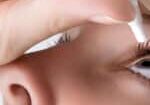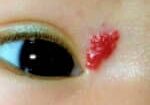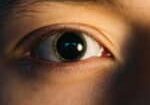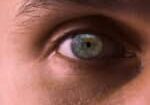Diplopia (Double Vision): An Overview

دوبینی معمولاً مشکلی موقتی است اما می تواند نشانه ای از مشكل جدی تري در بدن باشد؛ به همین دلیل بسیار مهم است که در صورت مشاهده هرگونه تغییر در بینایی خود فوراً به چشم
Diplopia, commonly known as double vision, is a condition where a person sees two images of a single object either constantly or intermittently. These two images may be side by side (horizontal diplopia), one above the other (vertical diplopia), or a combination of both. Diplopia can significantly affect vision quality and daily activities, making accurate diagnosis and prompt management crucial.
Types of Diplopia
- Monocular Diplopia
Double vision persists when one eye is covered. It is usually related to problems within the eye itself, such as lens abnormalities (e.g., cataract), corneal irregularities (e.g., keratoconus), or retinal disorders. - Binocular Diplopia
Double vision occurs only when both eyes are open and disappears when either eye is closed. It usually results from misalignment of the eyes due to issues with the eye muscles or nerves controlling eye movement.
Common Causes of Diplopia
- Ocular Causes
- Cataracts
- Corneal scarring or irregularities
- Retinal conditions (e.g., macular degeneration)
- Neurological Causes
- Cranial nerve palsies (III, IV, VI)
- Stroke
- Brain tumors
- Multiple sclerosis
- Muscular Disorders
- Myasthenia gravis
- Thyroid eye disease (Graves’ orbitopathy)
- Orbital Causes
- Trauma causing muscle entrapment
- Orbital tumors or infections
Symptoms Associated With Diplopia
- Seeing two images of a single object
- Eye misalignment (strabismus)
- Head tilting or turning to compensate for double vision
- Eye pain or discomfort (in some cases)
- Difficulty focusing or reading
Diagnosis
A thorough assessment by an ophthalmologist or neurologist includes:
- Comprehensive eye examination
- Ocular motility tests
- Cover-uncover test
- Imaging studies (MRI, CT scan) if neurological or orbital pathology is suspected
- Blood tests for systemic conditions like diabetes or myasthenia gravis
Treatment Options
Treatment depends on the underlying cause:
- Corrective Lenses or Prisms: Special glasses can help align images properly.
- Eye Muscle Surgery: To correct strabismus or muscle entrapment.
- Medical Management: For underlying conditions like myasthenia gravis or thyroid disease.
- Occlusion Therapy: Temporarily covering one eye to relieve symptoms.
- Botulinum Toxin (Botox) Injections: In some cases of ocular misalignment.
Important:
Sudden onset of diplopia, especially if accompanied by other neurological symptoms like weakness, numbness, or slurred speech, should be treated as a medical emergency.







I’m not sure where you are getting your info, but great topic.
I needs to spend some time learning more or understanding more.
Thanks for excellent info I was looking for this information for my mission.
I savor, result in I found exactly what I used
to be having a look for. You’ve ended my four day long hunt!
God Bless you man. Have a nice day. Bye